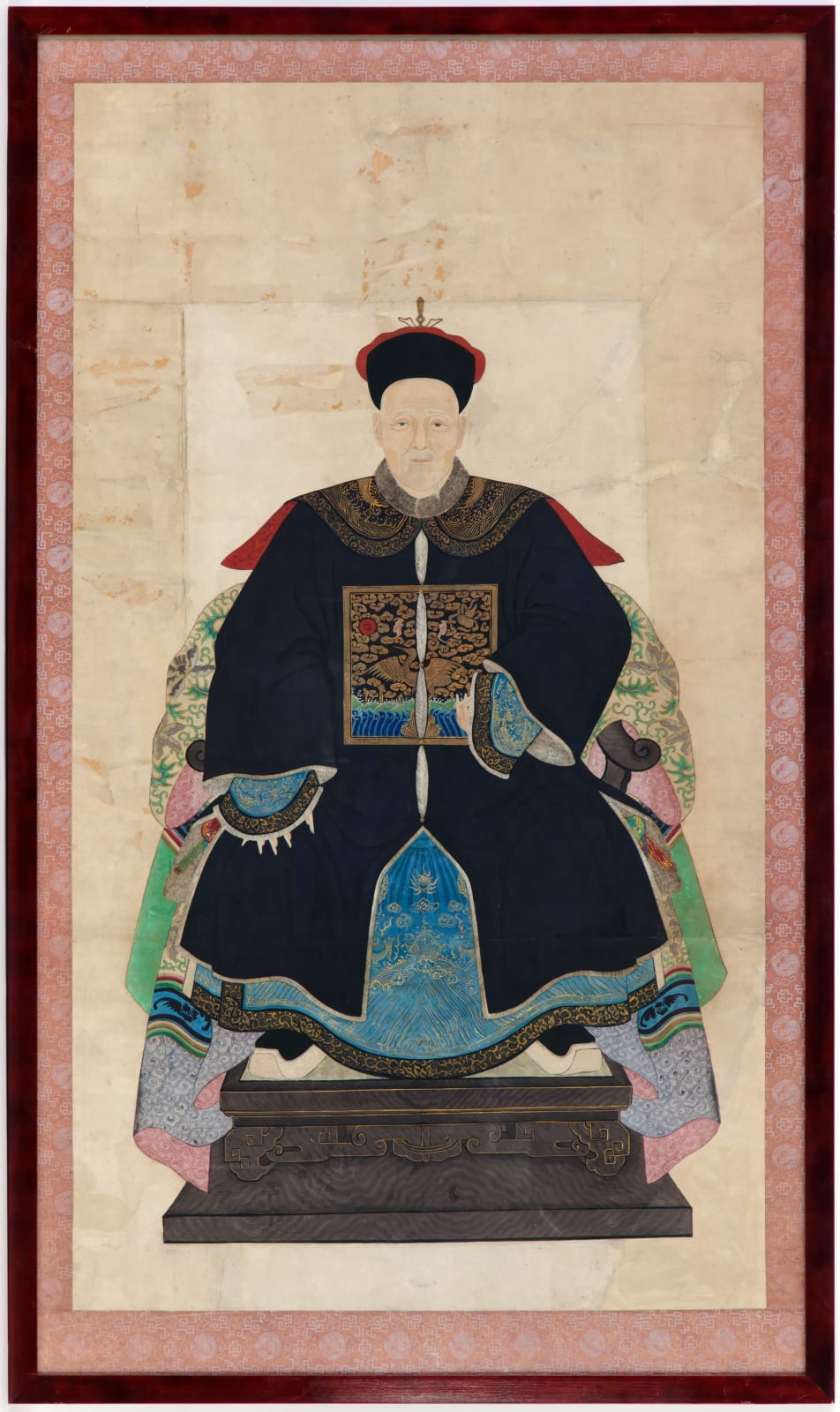Unknown
An extremely fine Chinese late Qing dynasty ancestor portrait showing a senior official of the first rank seated in hieratic posture on a wooden chair, wearing a richly ornamented court dress, the coat or pufa with a buzi or Mandarin square featuring a crane signifying that the sitter is a senior civil official of the first rank
China, late nineteenth century, Qing Dynasty
Gouache on paper
124 x 70 cm.
This very fine portrait features a scholarly official of the first rank as denoted by the fact that his coat is decorated with a crane. Such scholarly officials, also known as Mandarins, held the most prestigious positions in the Chinese Imperial bureaucracy. Throughout history there has been a distinct hierarchy amongst court officials. At first they were selected according to ability; by the Tang dynasty (618–907) candidates were tested on their literary knowledge but it was during the Qing dynasty (1644–1911) that the multi-tiered examination system came to the forefront. Until their abolition in 1905, passing these examinations was the most assured path to social and material advancement for the successful candidate and his family. Candidates aspired to posts on the Emperor’s advisory council as a first rank official, or to a provincial post. With further study a Mandarin might gain promotion to the higher ranks. However, some ranks could also be purchased.
There were nine civil ranks, each represented by a bird, with minor variations between the Ming and Qing dynasties. It could take many years to obtain an appointment and once achieved, there were rules of appropriate behaviour for civil officials. For example, they were not permitted to walk, but were required to travel in a sedan chair with the number of attendants and outriders appropriate to their rank, which could number more than fifty men. For Mandarins above the fourth rank, all street traffic had to stop when they passed, gongs were beaten and a cannon was fired when they entered or left a building. From a very early age boys were prepared for success in the examinations. Theoretically open to almost all males in China, the first test of learning was conducted by the local magistrate when a boy was eighteen. If the candidate was successful, he was eligible to take the first-degree examination, which was held annually in the prefectural capital. Passing at this level was roughly equal to earning a present day degree which gave the student government support as well as entry to the gentry. Second degree examinations were given every three years on the eighth moon in the provincial capital. During the spring of the following year, the candidate was eligible to take the third degree examination, held in Beijing, of which only about twenty percent of the candidates passed. For those who successfully reached this level, the final examination took place in the palace. If the candidate passed the palace examination, a high position in the government was assured, while those who only passed the lower examinations had to wait for an official appointment, usually in the provinces.
